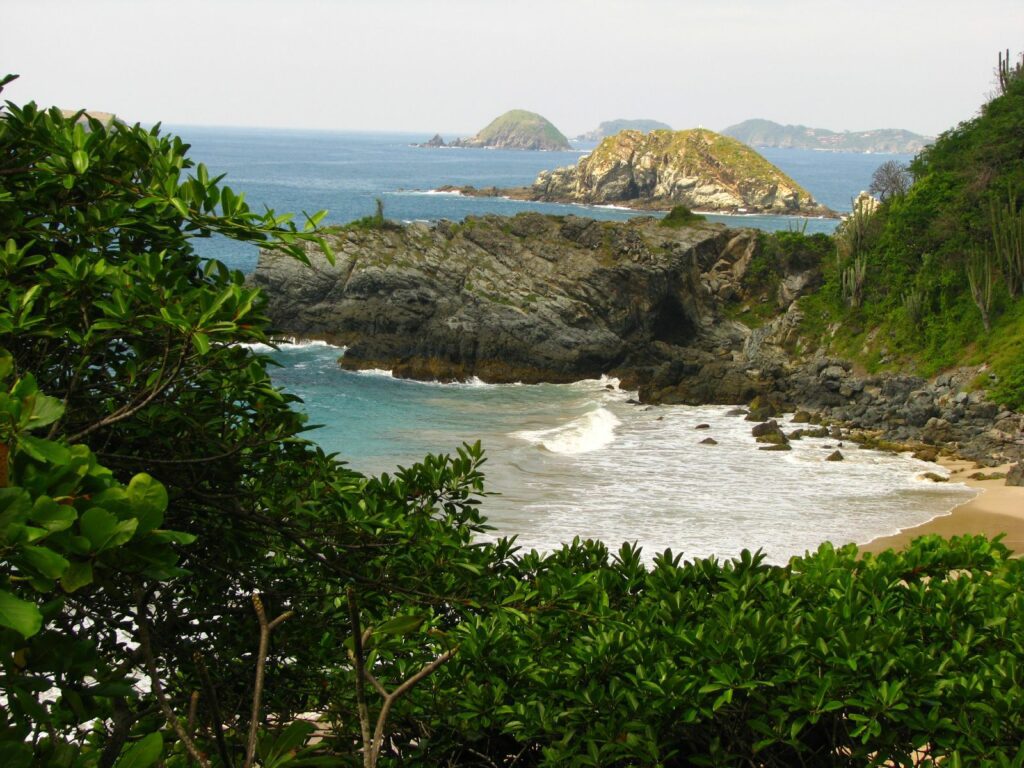Exploring the Rich History and Natural Beauty of Zihuatanejo
Zihuatanejo, also known as Ixtapa-Zihuatanejo, is a gem of a destination nestled on the Pacific Coast of Mexico. This charming town, which is the fourth-largest city in the Mexican state of Guerrero, has a rich history, breathtaking natural beauty, and a traditional town feel that sets it apart from other tourist resorts. Let’s dive into the captivating story of Zihuatanejo, from its pre-colonial roots to its rise as a top Mexican destination.
Thank you for reading this post, don't forget to subscribe!

Pre-Colonial Heritage
Zihuatanejo’s history dates back centuries, with its first human inhabitants being nomadic tribes known for their hunting and gathering culture. By the 15th century, the region was home to tribes like the Chumbia, Panteca, and Coixcas, who engaged in salt mining in what is now Ixtapa. Two main settlements, Xihuacan and Petatlán, were part of the pre-Hispanic dominion called Cuitlatepan, stretching along the coast from the Atoyac River to the borders of present-day Michoacán and Mexico State.
One intriguing legend suggests that Zihuatanejo was a sanctuary dedicated to the goddess Cihuatéotl, believed to be the mother of humanity and the protector of women who died in childbirth and warriors who perished in battle. An area known as “La Madera” is thought to have been a shrine due to the discovery of pre-Hispanic clay figures, possibly dedicated to this goddess.
South of Zihuatanejo Airport, an archaeological site called La Soledad De Maciel has been gradually unveiled, providing insight into the area’s ancient civilizations. This site, occupied from 3000 BCE to the early 600s CE, was a vital trading city, with artifacts from Teotihuacan and the Olmec civilizations. Despite challenges in excavating due to local land ownership, the Mexican government is working to preserve this valuable heritage.
History of Zihuatanejo Prior Arrival of the Spanish
The Spanish first arrived in Zihuatanejo in the 1520s, with Gonzalo de Umbria sent by Hernán Cortés to explore the area for potential riches. Their presence caused the native population todiminish, and much of their culture and language was lost over time. The Spanish utilized Zihuatanejo Bay as a point of departure for exploring the Pacific coast and launching ships bound for the Philippines.
During this period, tropical woods like cedar, oak, and walnut were among the main exports, contributing to the local economy. However, Zihuatanejo’s role as a port also attracted the attention of pirates during colonial times, adding an element of intrigue to its history.

Independence and Mexican Revolution
Zihuatanejo played a logistical role in José María Morelos y Pavón’s efforts during the Mexican War of Independence in 1811. The municipality faced challenges during the Mexican Revolution, with various factions passing through the area. While it was sympathetic to the rebel cause, it also witnessed federal forces and rebel bands causing disruptions.
In 1823, as the first republic took shape, Zihuatanejo was separated from Tecpan and became part of the district of Acapulco. Later, when the state of Guerrero was established, Zihuatanejo was incorporated into the municipalities of La Unión and Petatlán.
20th Century Transformation
In the 20th century, Zihuatanejo experienced significant changes. In 1926, a group known as the “vidalistas” attacked the town, leading to secret agreements with the government to secure the release of certain individuals. A strike in 1952 by coconut plantation workers from Acapulco to Zihuatanejo disrupted daily life, leading to a heightened sense of local identity.
The pivotal moment arrived in the 1970s when the federal government decided to develop the Zihuatanejo-Ixtapa area into a tourist attraction. This decision marked a turning point, leading to a dramatic increase in population and transforming the economy into one heavily reliant on tourism.
Present-Day Zihuatanejo
Today, Zihuatanejo remains a picturesque fishing town and a thriving resort destination. It boasts a well-preserved traditional Mexican feel, setting it apart from more modern tourist resorts. The town’s center, known as “El Centro,” features narrow streets paved with stones or bricks, creating a charming atmosphere.
The heart of Zihuatanejo is the waterfront walkway, Paseo del Pescador (Fisherman’s Path), which is lined with restaurants offering fresh seafood and other delicious dishes. It’s a place where locals and visitors alike gather to socialize and enjoy the stunning coastal views.
Zihuatanejo’s main attraction is its well-protected bay, favored by private boat owners during the winter months. The bay’s beaches, including Playa Madera and Playa La Ropa, offer gentle waves and picturesque surroundings. These beaches are perfect for swimming and relaxation.
For those interested in history and culture, the Museo Arqueológico de la Costa Grande (Archeological Museum of the Costa Grande) is a must-visit. This museum showcases artifacts from various civilizations that once inhabited the region, providing a fascinating glimpse into Zihuatanejo’s past.
Zihuatanejo has also become a popular cruise ship destination, attracting visitors from around the world. Cruise passengers can explore the town’s vibrant culture and enjoy activities like snorkeling, spinnaker flying, and sunset cruises.
Every year, Zihuatanejo hosts events like the Zihua Sail Fest and the Zihuatanejo International Guitar Festival, which draw both locals and tourists, contributing to the vibrant atmosphere of the town.
In conclusion, Zihuatanejo’s unique blend of history, natural beauty, and traditional charm makes it a captivating destination on Mexico’s Pacific Coast. Whether you’re interested in exploring its rich heritage, relaxing on its pristine beaches, or immersing yourself in its lively culture, Zihuatanejo offers a memorable experience for all who visit.

